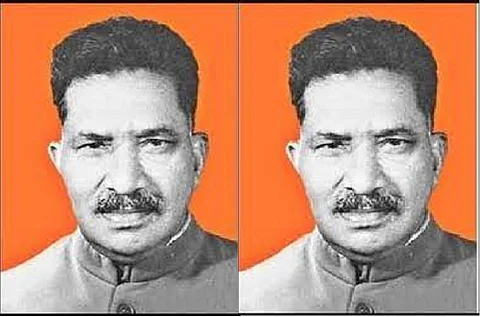

#AG Vallabhan
Bhopal | When crores of Hindus are set to reclaim its lost glory with a magnanimous Ram Temple in Ayodhya, little is known about the contribution of Shri. KK Nair (Kadangalathil Karunakaran Nair), a 1930 batch ICS Officer.
The Indian Civil Service officer who helped the Hindu Mahasabha lay claim to the Babri Masjid was born on September 11, 1907 in a small village in Kuttanad in Alleppy District of Kerala, did his higher education from England and passed his civil services exam at a young age of 21. He was posted as the Dy. Commissioner cum District Magistrate of Faizabad District on June 1, 1949 and remained in duty till 14 March 1950.
The legal journey of the Ayodhya case dates back to 1885 when Mahant Raghubir Das filed a petition in the Faizabad district court seeking permission to build a canopy outside the disputed structure.
On the direction of the State Government, KK Nair, the Deputy Commissioner-cum-District Magistrate submitted a ground report to the government based on Guru Dutt Singh, the city magistrate’s report. In his report Guru Dutt Singh recommended handing over the site to Hindus for a construction of a grand temple at the Ramjanmabhoomi site where Babri Masjid stood.
Despite this ground report, on 22nd December, 1949, the then Uttar Pradesh’s Chief Minister, Govind Vallabh Pant, at the behest of Prime Minister Jawaharlal Nehru, made an order to oust Hindus from the tiny Ram Lalla temple at the Babri Masjid.
But the bold and courageous DM, KK Nair refused to implement the illegal order of GB Pant and pointed out the fact that the real stakeholders, i.e. the Hindus were performing Poojas there daily and the move would lead to riots and bloodshed.
On the intervening night of 22-23 December, 1949, an idol of Ram Lalla 'mysteriously appeared at the disputed site'. This was the beginning of a long and tiring legal battle that has changed the political history of post-Independent India
Fearing threat of communal unrest, the state government held both the officers as Hindu radicals who had planted the idol in the Babri Masjid on the night of 22 December 1949. The official investigation that ensued concluded that Nair and Singh played such a flagrant role in the incident that they must be suspended. Following a long battle in Allahabad HIgh Court and after his reinstatement , KK Nair resigned from his post together with his assistant Guru Dutt Singh. But for the Hindus, he was a hero who helped them to “claim” the land of their God. He started practicing as an advocate in Allahabad High Court.
In 1967 parliamentary elections, KK Nair was elected to 4th Lok Sabha from Bahraich (Lok Sabha constituency) as a candidate of Bharatiya Jan Sangh, his wife Shakuntala Nair was also elected from Gonda Lok Sabha constituency in Uttar Pradesh on a Hindu Mahasabha ticket. Nair married Shakuntala, a native of Dehradun, in 1946. From 1962 to 1967, she was also a member of the Uttar Pradesh Vidhan Sabha. Both husband and wife were members of the 4th Lok Sabha.
Nair breathed his last in his hometown on 7th September 1977. After hearing of his death, a group of residents from Ayodhya went to Kerala to receive his ashes and later immersed his ashes in Sarayu River. Thus, Kandangalathil Karunakaran Nair is a name deeply engraved in the history of the Ayodhya movement and his life will remain as a testament to courage, resilience and unwavering commitment to justice.
(The writer is a Senior Journalist & President, Bhopal Nair Samaj)
